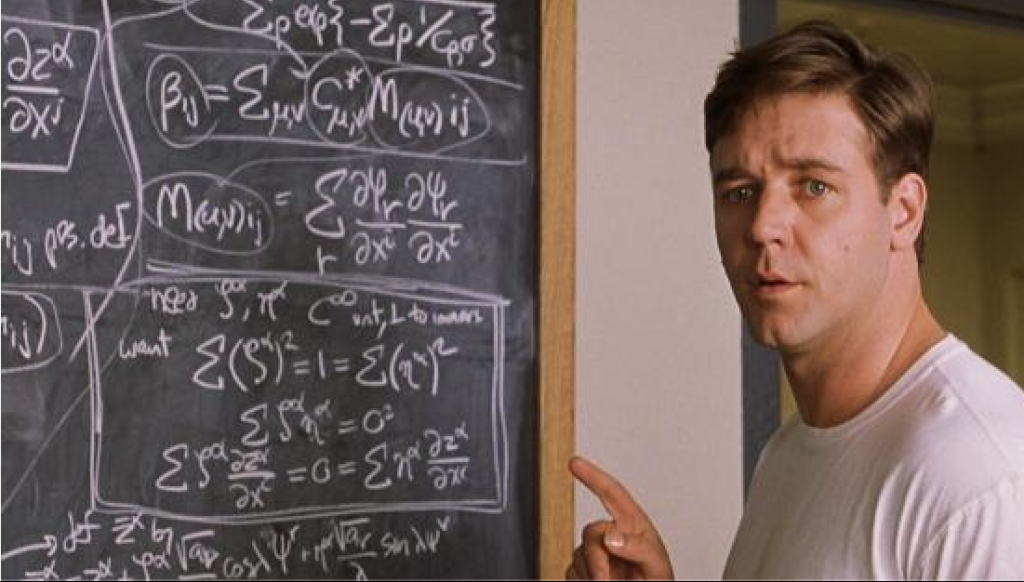DFS Game Theory Bible
- DFS Game Theory Bible Introduction
- Why Game Theory?
- Human Interactions
- Exploitative Leverage
- Arrow’s Impossibility Theorem And The Bystander Effect
- Game Tree and Decision Nodes
- Risk Dominance and Payoff Dominance
- Expected Value
- Imperfect Information, Subjective Probabilities, and Assumptions
- Mixed Strategy in Complex Games
- Condition of Independence Under Common Knowledge
- Backward Induction and Causality
- So Again, Why Game Theory?
Why Game Theory?
We’re going to first lay out the theoretical groundwork of these new assertions before diving into the application to DFS and beyond. I would suggest rereading that groundwork a few times before continuing to the application sections because a firm theoretical understanding of the “why behind the how” is instrumental in game plan development.
The scope, limits, and applications of Game Theory continue to be redefined and tested, but the basic principles established by John von Neumann and Oskar Morgenstern in their 1944 book, Theory of Games and Economic Behavior, remain steadfast. The two laid the foundation for mathematician John Nash to assert that competing agents (you, me, and the field) in combinatorial games (games with borderline limitless combinations of potential moves or outcomes) will eventually approach Nash equilibrium (NE). NE can be defined as “a stable state of a system involving the interaction of different participants, in which no participant can gain by a unilateral change of strategy if the strategies of the others remain the same.” Basically, all agents or participants in a game behave in the same manner and approach the decision-making process in the same way so as not to allow exploitation or the process of achieving an edge through the direct interaction with other agents.

Our present-day computer modeling, learning, and power have made NE a distinct possibility in games such as poker and chess, in which future moves (or decisions) are determined based on previous inputs. This can be done through our understanding of sequential games, or games that involve a sequence of events given by various participants (think Best Ball or regular snake drafts, where previous inputs influence future decisions for all agents). The problem with attempting to tailor NE to non-sequential games is that we don’t achieve the same level of feedback as every agent’s inputs lock at the same time (roster lock). We can, however, achieve some level of feedback through general field tendencies, our observations of previous slates, field data, and ownership expectations that we can directly input into our decision-making model to influence game plan development.
This paradox leads to a certain level of assumptions that must be made prior to roster lock, which are directly influenced via ownership projections. This is how I developed my methodologies for defining chalk, the chalk build, leverage potential, and roster construction, and how we will attempt to apply the theories discussed here to the game of DFS.
varying from optimal strategy
Now, with the understanding that NE requires massive amounts of computational power, assumptions based on previous moves or actions, and the assumption that the rest of the field is also utilizing NE methodologies, can DFS ever truly be defined as a game in equilibrium? The general field tendencies would lead us to believe the answer to the question is a resounding “YES,” but more on that later. This is an important conclusion to understand prior to us continuing. As such, the primary means of leverage generation in the game of DFS, a game that can be defined as non-sequential or simultaneous (everyone’s actions aren’t known), combinatorial (borderline limitless combinations of potential inputs/outputs), and non-zero-sum (in GPP play, my win or loss does not directly correspond to your win or loss), are deeply rooted in the realm of exploitation. Further reasoning comes in the form of variance and its influence on the potential outcomes of the game, the pay table of each contest, and the presence of some form of “optimal.”
If you caught the weekly Best Ball Game Theory podcasts this offseason (and if you didn’t, you totally should – they were all FREE!), that last bit should sound familiar, in the sense that “optimal” involves median projections, and any deviation from optimal should generate enough leverage to offset the expected loss in expected value. But, what else is present in the game of daily fantasy football? The game of football is played by imperfect human beings, 22 of which are on the field at any given time, with further influence from outside agents such as the various coaches on an NFL team, weather, field conditions, and game environment. Additional layers of variance seep in with each additional variable previously discussed. Think about how play-calling is influenced based on weather, or field conditions, or game script, or coaching tendencies. The more we dive into the various variant acts present in the game of football, the more we realize the magnitude of the leverage that can be gained by straying from “optimal.” This idea is rooted in Game Theory but can be applied to everything from salary allocation, roster construction, flex usage, and stacking and correlation to game selection, strategy development, and user input.
Want Access Beyond This Page?
Dive Into All 13 Lessons Of Hilow’s Game Theory Bible for $59!
